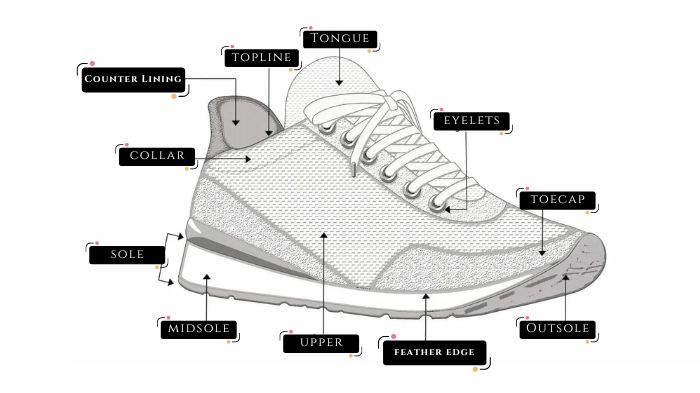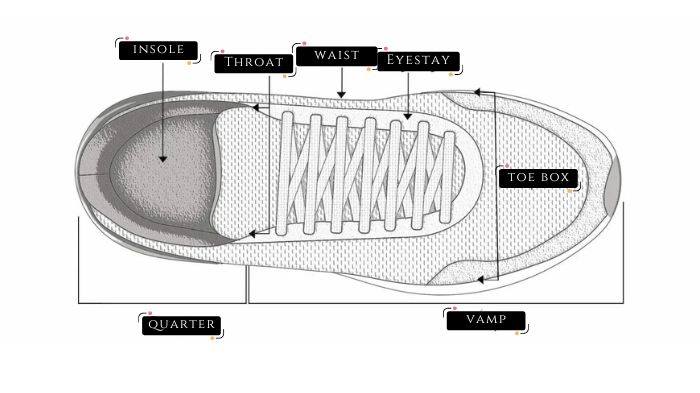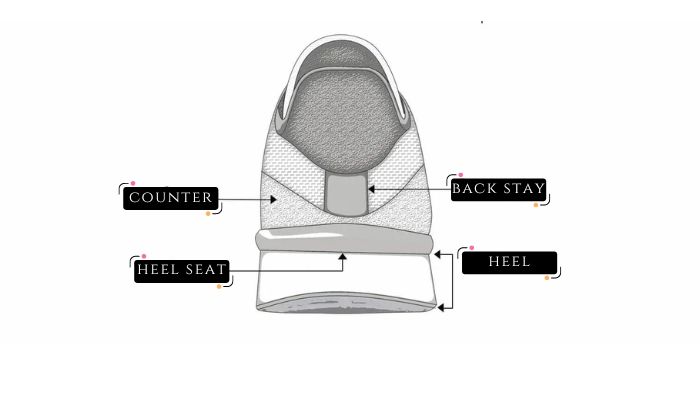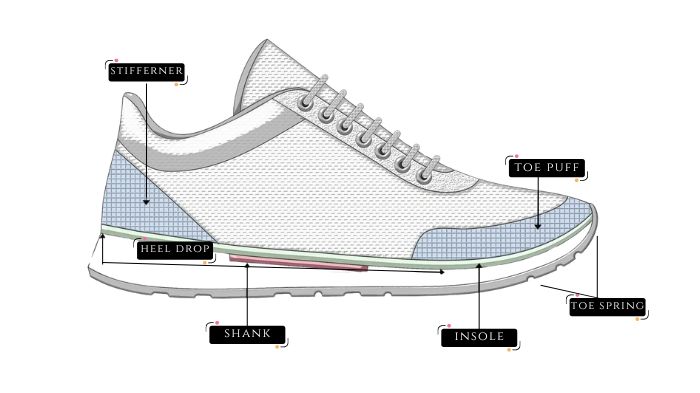Shoes are not only a fashion statement but, they also support us and protect our feet. This support system develops with many components and these components are called shoe anatomy or parts of a shoe.
However, shoes play an important role in our lives. But, do you ever want to know the parts of shoes that make them functional? Let’s talk about them in detail.
Read my latest post on: SP in shoes.

What is a Shoe Anatomy?
Every shoe has three parts, upper, outsole, and midsole. Moreover, each section has its many parts. Mostly there are 23 different parts in shoes overall.



The Upper Part
The upper is the most important and visual section of a shoe. It covers the top of your foot and supports your foot above the sole. However, it has many features that work together. These parts can be made of leather, cloth, or synthetics. Here are its main elements.
Vamp: This is the front upper of a shoe that covers the toes and midfoot. It usually has overlays and stitching for structure and style.
Quarter: These are the sides of the upper, those extend from the vamp to the back of the shoe. They work as support and fit of a shoe.
Tongue: This is the cushioned portion that fits between the laces and the top of the foot. It provides comfort and avoids pressure from the laces.
Collar: This portion is also called ankle collar. This wraps around the heel and ankle to offer support and stability.
Laces or Closure System: Laces help to customize the fit of a shoe. These are the most frequent type of closure system, but straps, buckles, and elastic closures are also used.
Eyelets: Eyelets are holes through which laces can be put.
Linings: Linings of a shoe are the inner layers of material that cover the inside of the upper of a shoe. This directly contacts the foot. The lining is mostly hidden but very important for shoe cushioning, moisture management and overall foot health.
Toe Box: The front portion of the upper that houses the toes. It should provide ample toe flexibility while retaining a secure fit.
Heel Counter: This is the solid component at the back of the shoe that offers stability and keeps the heel from sliding.
The Outsole Part
This is the bottom of the shoes that directly into contact with the ground and provides traction. The outsole is the foundation of shoes, which is often made of tough materials such as rubber. The main layers of the outsole have further two sections, Strobel and midsole.
The Midsole Part
The midsole of shoes cushions the foot between the outsole and the top. It absorbs shock and returns energy. The EVA foam and polyurethane are typical midsole materials that offer various levels of cushioning.
The Insole Part
The insole is also called a footbed. This is the inner section of a shoe where our feet sit. It provides comfort, arch support, and moisture management.

Other Components of a Shoe
Insole: The insole is also called a footbed. This is the inner section of a shoe where our feet sit. This is a removable layer. It provides comfort, arch support, and moisture management.
Heel: This is the back section of a shoe that provides additional support.
Shank: This is a stiff piece attracted to the midsole. It provides extra support and stability and is mostly used in sports shoes.
Foxing: This is the strip of material that connects the top and midsole at the shoe’s base. It gives more structure and strength.
Bottom Lines
As we can see, shoe anatomy shows the complex engineering and handiwork system. All this system makes it a workable item. From the base that grips the ground to the top that fits your foot, it offers comfort, support, and style.
We hope this information will help you to understand the anatomy of a shoe. Stay happy and always wear footwear that suits you :).





